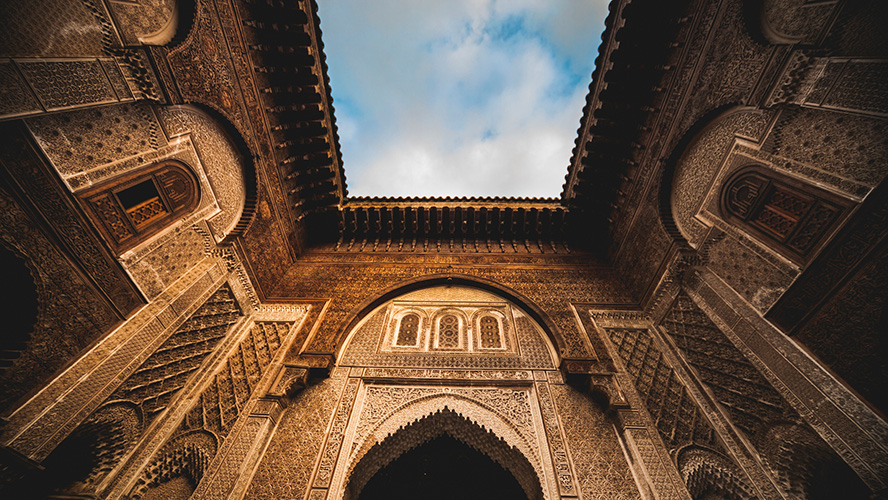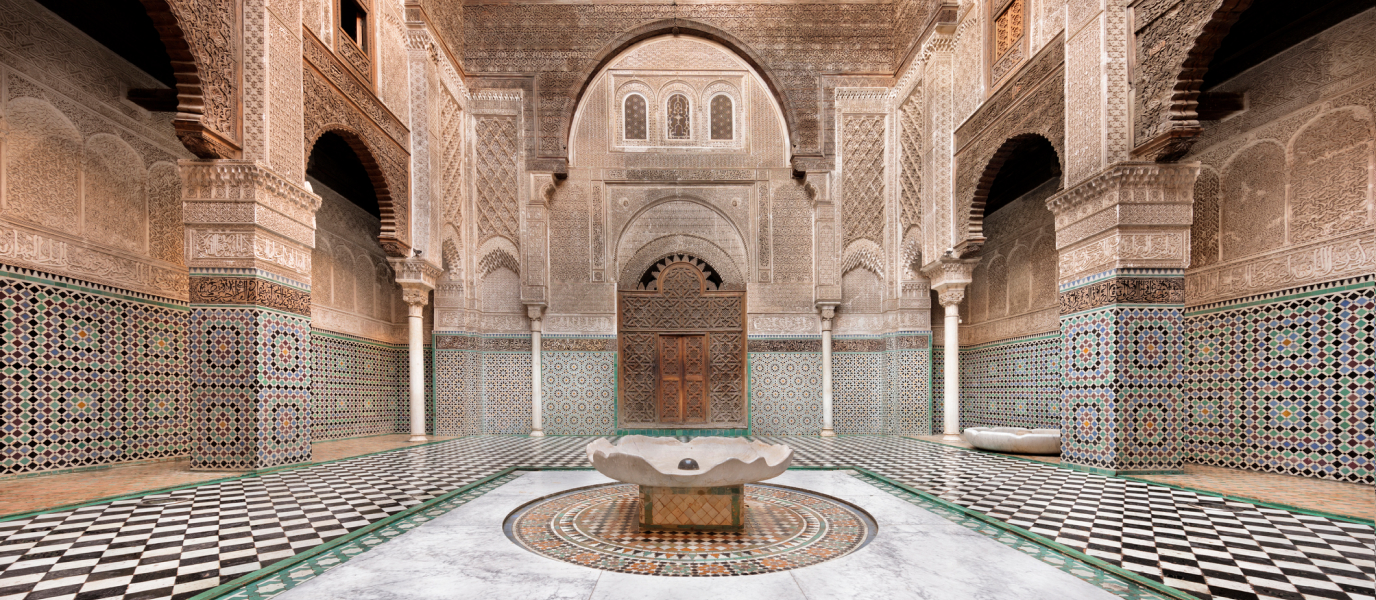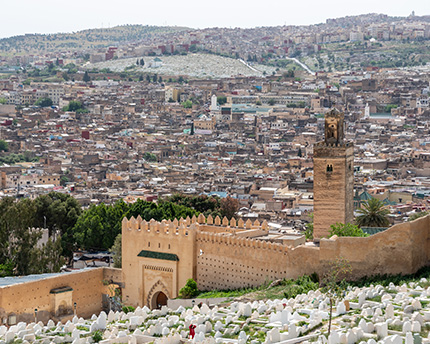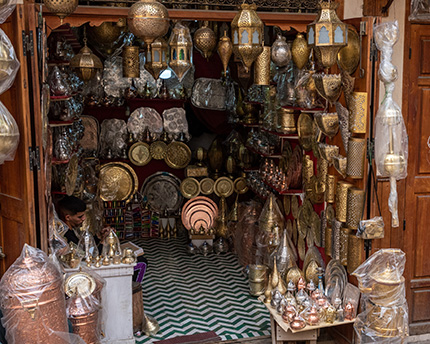The Al-Attarine Madrasa is one of the most important spiritual centres in Fez and one of the most visited landmarks in the Moroccan city. It was inhabited by numerous scholars and craftsmen and has a very long history and cultural background. The Koranic school, also known as ‘medersa’, housed students who studied verse by verse the entire contents of the Koran. It was founded in the fourteenth century, in the year 1325, by the Sultan Abu Said. From the outset it was designed as an annex of the neighbouring Al-Qarawiyyin mosque, considered the oldest university in the world, since it was built in the year 859 under the mandate of Fatima al Fihriya.
In the central courtyard of the madrasa you can see traditional motifs by the craftsmen of the Marinid Sultanate, of Berber origin, featuring magnificent mosaics (or zellij), carved stuccoes and noble woods, in particular cedar. Onyx columns flank the mihrab or niche, which always faces Mecca.
Situated in the heart of the maze-like medina of Fez, Al-Attarine Madrasa has been restored with great care, following the structure of the primitive Koranic school.
History and introduction
The Medersa Al-Attarine is said to be the most beautiful in Morocco and one of the main schools of the Koranic religion, where students could live while they studied. It was located next to Al-Qarawiyyin mosque, since a large part of the classes were given at the Muslim temple.
It is called Attarine after the name of the neighbourhood in which it is located, namely the spice and perfume souk, and remained in use until the early twentieth century, when the 60 students who then resided in its 30 rooms had to leave for good. It is worth remembering that Fez was, at that time, the capital of science and knowledge of the Maghreb.
The Medersa Al-Attarine is not the only one in Fez, however. Also worth a mention is the Bou Inania Madrasa, also from the fourteenth century, which has a minaret, so that on Fridays it also functioned as a mosque. However, in terms of size, it is somewhat larger than the Al-Attarine Madrasa.
Interior and architecture
Located on Rue Talaa Kebira, the Medersa Al-Attarine unfurls around an open courtyard in the centre of which is an imposing marble fountain fed by water from an underwater stream. At the end of the courtyard a highly-decorated cedar wood dome covers the prayer room where one can see the mihrab, which indicates to the faithful the direction of Mecca.
The walls of the medersa are decorated with beautiful mosaics on which phrases from the Koran are inscribed as a form of decoration. In the upper part of the walls you can see detailed stucco work with floral motifs.
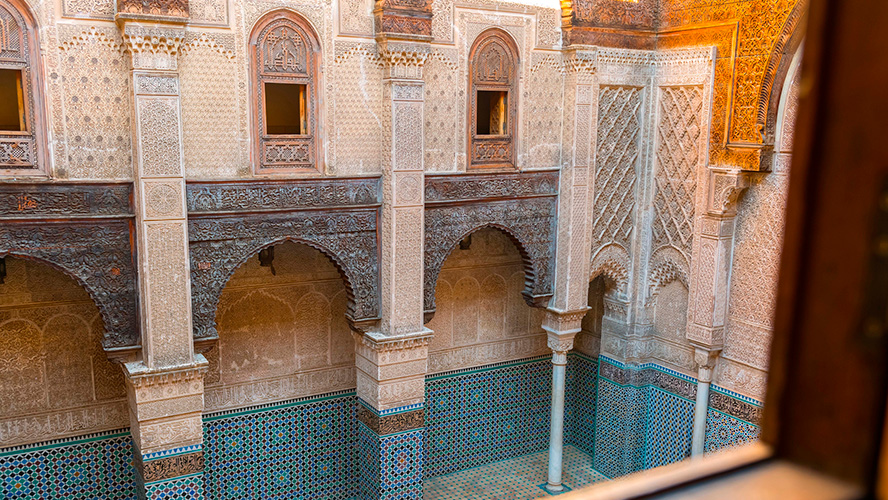
Another characteristic of the Medersa Al-Attarine is the technique used to carve the black glazed tiles. Known as taqshir, it consists of works of art featuring the curves of Arabic calligraphy and is based on filing away part of the glossy glaze to carve letters or other decorative shapes.
The upper floors of the Medersa Al-Attarine are occupied by the small rooms in which the young students spent their years of study, with windows overlooking the central courtyard.
Although there are other medersas in Fez, Al-Attarine stands out for its elegant and harmonious architecture. It is one of the best preserved and most richly decorated in the whole of Morocco.
You can visit the madrasa from Monday to Sunday from 8.30 am to 12.30 pm and from 2.30 pm to 6.30 pm. Entrance costs around 2 euros, which comes to around 20 dirham.
